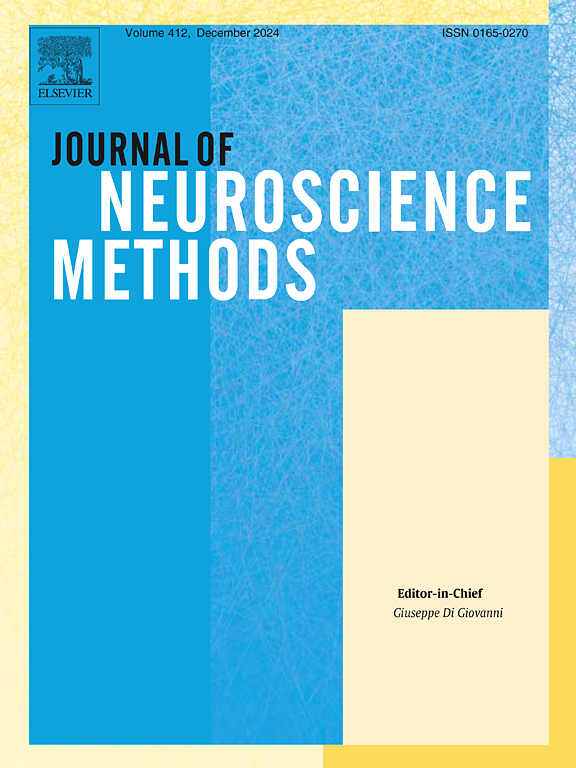Latency correction in sparse neuronal spike trains with overlapping global events
IF 2.7
4区 医学
Q2 BIOCHEMICAL RESEARCH METHODS
引用次数: 0
Abstract
Background:
In Kreuz et al., J Neurosci Methods 381, 109703 (2022) two methods were proposed that perform latency correction, i.e., optimize the spike time alignment of sparse neuronal spike trains with well-defined global spiking events. The first one based on direct shifts is fast but uses only partial latency information, while the other one makes use of the full information but relies on the computationally costly simulated annealing. Both methods reach their limits and can become unreliable when successive global events are not sufficiently separated or even overlap.
New Method:
Here we propose an iterative scheme that combines the advantages of the two original methods by using in each step as much of the latency information as possible and by employing a very fast extrapolation direct shift method instead of the much slower simulated annealing.
Results:
We illustrate the effectiveness and the improved performance, measured in terms of the relative shift error, of the new iterative scheme not only on simulated data with known ground truths but also on single-unit recordings from two medial superior olive neurons of a gerbil.
Comparison with Existing Method(s):
The iterative scheme outperforms the existing approaches on both the simulated and the experimental data. Due to its low computational demands, and in contrast to simulated annealing, it can also be applied to very large datasets.
Conclusions:
The new method generalizes and improves on the original method both in terms of accuracy and speed. Importantly, it is the only method that allows to disentangle global events with overlap.
具有重叠全局事件的稀疏神经元尖峰序列的潜伏期校正。
背景:在Kreuz等人,J Neurosci Methods 381, 109703(2022)中,提出了两种执行延迟校正的方法,即优化具有明确定义的全局尖峰事件的稀疏神经元尖峰序列的尖峰时间对齐。前者基于直接移位,速度快,但只利用了部分延迟信息;后者利用了全部信息,但依赖于计算代价高昂的模拟退火。这两种方法都有其局限性,当连续的全球事件没有充分分离甚至重叠时,它们可能变得不可靠。新方法:在这里,我们提出了一种迭代方案,它结合了两种原始方法的优点,在每一步中尽可能多地使用延迟信息,并采用非常快速的外推直接移位方法代替慢得多的模拟退火。结果:我们展示了新迭代方案的有效性和改进的性能,以相对移位误差来衡量,不仅在具有已知基础事实的模拟数据上,而且在沙鼠的两个内侧上橄榄神经元的单单元记录上。与现有方法的比较:迭代方案在模拟数据和实验数据上都优于现有方法。由于它的计算需求低,并且与模拟退火相比,它也可以应用于非常大的数据集。结论:新方法在准确度和速度上对原方法进行了推广和改进。重要的是,它是唯一允许分解有重叠的全局事件的方法。
本文章由计算机程序翻译,如有差异,请以英文原文为准。
求助全文
约1分钟内获得全文
求助全文
来源期刊

Journal of Neuroscience Methods
医学-神经科学
CiteScore
7.10
自引率
3.30%
发文量
226
审稿时长
52 days
期刊介绍:
The Journal of Neuroscience Methods publishes papers that describe new methods that are specifically for neuroscience research conducted in invertebrates, vertebrates or in man. Major methodological improvements or important refinements of established neuroscience methods are also considered for publication. The Journal''s Scope includes all aspects of contemporary neuroscience research, including anatomical, behavioural, biochemical, cellular, computational, molecular, invasive and non-invasive imaging, optogenetic, and physiological research investigations.
 求助内容:
求助内容: 应助结果提醒方式:
应助结果提醒方式:


